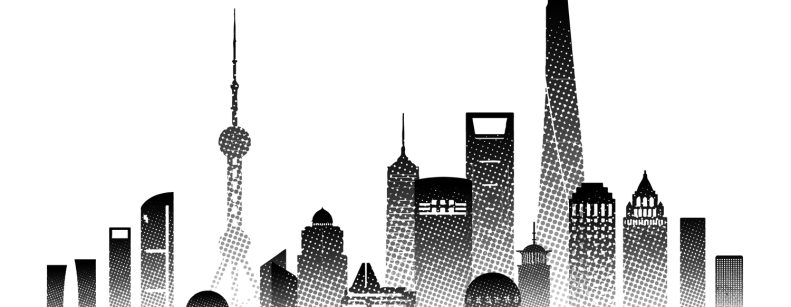
As mentioned in the first part, the difficulties facing the Chinese economy go beyond lower growth and the greater need for stimulus. There are structural factors that compromise the country's future performance.
One of the main difficulties facing China's economy lies in its real estate sector, which represents 30% of GDP (this figure is 16% on average in developed countries). The sector began to show cracks since August 2021 and is experiencing a sharp contraction. Housing prices have fallen sharply and sales and housing starts have fallen by about 30% and 60%, respectively. All this is due to an oversupply of housing and the financial vulnerabilities accumulated by real estate companies during the construction boom years, boom, which was encouraged by government policies as part of the country's growth strategy.
The "three red lines" policy implemented in August 2020 implemented in August 2020 sought to limit the indebtedness of real estate developers and consisted of placing limits on three financial ratios required to access new financing. The "three red lines" policy, implemented in August 2020, sought to limit the indebtedness of real estate developers and consisted of placing limits on three of the financial ratios required to access new financing. Its application led most of the companies in the sector to fall into default. The cases of Evergrande, Sunac and Greenland stand out due to their size. Another significant number of companies in the sector The other significant number of companies in the sector are experiencing liquidity and/or solvency problems and difficulties in finding financing, and solvency problems and difficulties in finding financing, with the aggravating factor of the loss of value of the companies. Other structural factors affecting the sector include an aging population, a low birth rate, a high rate of home ownership (90%) and the low average age of housing, which has negatively impacted the demand for housing. The real estate problem cannot be solved in the short term; it will probably take the country the rest of this decade and more to solve it.
Recently, the Chinese authorities have announced a number of measures aimed at stimulating consumption and investment and alleviating the real estate sector, the Chinese authorities have announced various measures aimed at stimulating consumption and investment and easing the real estate sector. An example of this is the decision to cut the 5-year to cut the 5-year interest rate announced last week. This rate is the benchmark for mortgage loans and, therefore, the measure is intended to promote credit, stimulate investment and alleviate the real estate sector, the measure seeks to promote credit, stimulate consumption, favor investment and support the real estate sector. In other words, three birds with one stone, but it remains to be seen whether it will have the desired effect. In any case, in the eyes of the market, the efforts made so far are insufficient to achieve the required boost.
So where is China headed? It is true that the real estate sector is weak, that the demographic structure represents a challenge for the years to come due to a rapidly the demographic structure represents a challenge for the years to come because of a rapidly aging population and low birth rate, that Western trade and technology restrictions are a drag on China's productivity growth, that there are strong tensions in relations with key trading partners, and it is even true that the government is behind on pro-market reforms. These are all things that negatively impact already low future growth prospects and put their sustainability at risk.
Some believe that for China to maintain sustainable growth, it must continue the high-investment, manufacturing-intensive strategy that made it the great dragon1 that it is today. that it is today, while others believe that to maintain a high growth rate it must significantly reduce investment and replace it with a greater reliance on consumption. The latter is precisely what the Chinese government has been trying to achieve, without much success, over the past decade.
However, China still has some cards up its sleeve. One of them is the high level of savings, which exceeds 40% of GDP. A high level of savings means that it has cheap financing to innovate, that is of course if, indeed, it uses it for technological development, because otherwise, so much savings could become problematic.
The thing is, China is already investing heavily in the technologies that will shape the global economy for decades to come, such as renewable energies, electric vehicles and artificial intelligence.. It is also rapidly developing its capabilities in emerging technologies such as nuclear fusion, quantum computing, quantum communication and photonic semiconductors. We know that the technology-intensive development strategy works, as other successful economies have demonstrated in their time, as Japan did in the 1970s and 1980s. The day will dawn and we shall see.
Milene Rodriguez
Strategy and Investment Analyst